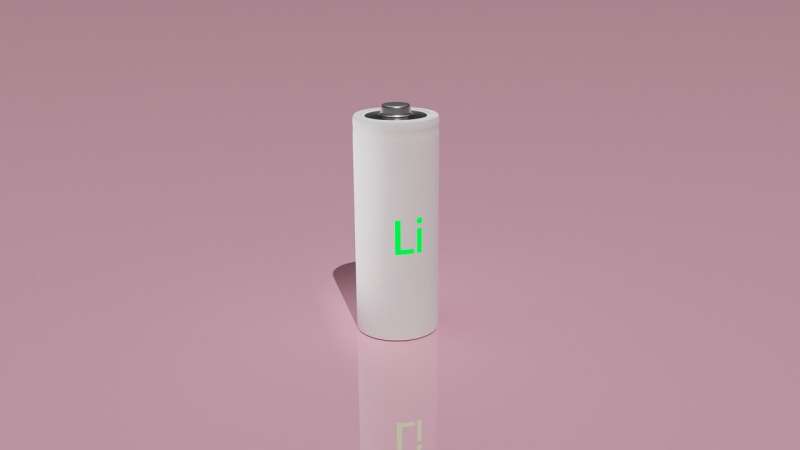
Lithium-ion (Li-ion) batteries, rechargeable batteries that can store energy via the reversible reduction of lithium ions, are among the most widespread battery technologies, due to their remarkable performance and extended life cycle. Many existing and emerging technologies are currently powered by these batteries, including smartphones, laptops and electric vehicles.
Despite their advantages, Li-ion batteries are becoming increasingly expensive, as they contain materials that are in high demand and difficult to source in large quantities, such as cobalt (Co) and nickel (Ni). Battery manufacturers and energy experts have thus been trying to identify alternative designs that require little or no cobalt and nickel, as they could reduce the costs of Li-ion batteries and facilitate their large-scale production.
Researchers at University of California Irvine, and other institutes across the United States recently introduced a new strategy to create cobalt-free cathodes for Li-ion batteries that do not adversely impact the batteries' performance. Their study, featured in Nature Energy, was funded by the U.S. Department of Energy's Vehicle Technology Office.
"Our project started in 2018 and ended in March 2023," Huolin Xin, one of the researchers who carried out the study, told Tech Xplore. "When we began our research, the whole industry was working on ultrahigh-Ni cathode to replace or lower Co use. In 2019, the problem of Ni becoming the next pain point for the EV industry has already formed in my mind, because I found that the price of Ni had already increased to one third of Co's price. During a project review meeting at the end of 2019, on behalf of my team, I made a few new year's resolutions, one of which was to create a low-Ni, high-Mn, Co-free cathode to circumvent the Ni pain point."
In 2020, Xin and his colleagues devised a new strategy to achieve zero-strain in a high-Ni (Ni-80%) cathode active material (CAM). Their strategy is based on so-called concentration complex doping, a technique to change the properties of materials using specific chemical substances (i.e., dopants).
"After this previous study was published in Nature, I told my team that we should try to apply this strategy to create a low-Ni CAM," Xin explained. "Very successfully, we quickly showed that the concentration complex doping strategy can enable a commercially viable low-Ni, high-Mn CAM.
The concentration complex doping strategy proposed by Xin and his colleagues has several notable advantages. Via low cation mixing, it was found to enable a high capacity of 190 mAh/g at C/10 and a high specific energy of 700 wh/kg at C/3 in cathode materials, as well as a high thermal stability and long battery lifecycles.
"Our proposed strategy is low cost because it is cobalt-free, Ni content is reduced by 50%, and Mn, the main material we use, is cheap," Xin said. "We demonstrated low cation mixing that unlocks high capacity (190 mAh/g at C/10) and high specific energy (700 wh/kg at C/3), a high thermal stability that outperforms that of NMC-532 and a long cycle life reaching >4000 cycles, which makes it competitive against LFP cells."
In contrast with other proposed strategies to reduce the reliance of Li-ion batteries on Co and Ni, the approach introduced by Xin and his colleagues does not require the coating of the materials' surface. This makes it easier to implement on a large-scale.
In initial tests, Co-free cathodes created using the team's strategy performed remarkably well, enabling the fabrication of stable and efficient Li-ion batteries with long lifecycles. In the future, it could be used to create more affordable Li-ion batteries for a wide range of applications, while also potentially inspiring the introduction of similar doping-based approaches to create cobalt-free batteries.
"We are now working on next-gen CAMs that have even lower-Ni/Co content which will again lower the cost of CAM materials," Xin added.